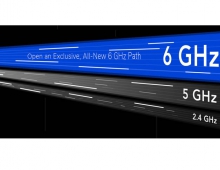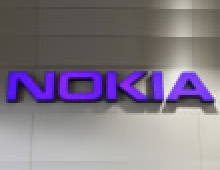
Alcatel-Lucent Achieves 10Gbps Data Transmission Over Traditional Copper Telephone Lines
Bell Labs, the research arm of Alcatel-Lucent, has set a new broadband speed record of 10 gigabits-per-second (Gbps) using traditional copper telephone lines and a prototype technology that demonstrates how existing copper access networks can be used to deliver 1Gbps symmetrical ultra-broadband access services.
Achieving 1 Gbps 'symmetrical' services - where bandwidth can be split to provide simultaneous upload and download speeds of 1 Gbps - is a major breakthrough for copper broadband. It will enable operators to provide Internet connection speeds that are indistinguishable from fiber-to-the-home services, a major business benefit in locations where it is not physically, economically or aesthetically viable to lay new fiber cables all the way into residences.
The Bell Labs tests used a prototype technology called XG-FAST. This is an extension of G.fast technology, a new broadband standard currently being finalized by the ITU. When it becomes commercially available in 2015, G.fast will use a frequency range for data transmission of 106 MHz, giving broadband speeds up to 500 Mbps over a distance of 100 meters. In contrast, XG-FAST uses an increased frequency range up to 500 MHz to achieve higher speeds but over shorter distances. Bell Labs achieved 1 Gbps symmetrical over 70 meters on a single copper pair. This was achieved using a frequency range of 350 MHz. Signals at higher frequencies were completely attenuated after 70 meters. In addition, 10 Gbps was achieved over a distance of 30 meters by using two pairs of lines (a technique known as "bonding"). Both tests used standard copper cable provided by a European operator.
However, in practical situations, other significant factors that can influence actual speeds include the quality and thickness of the copper cable and cross-talk between adjacent cables (which can be removed by vectoring).
"Our demonstration of 10 Gbps over copper is a prime example: by pushing broadband technology to its limits, operators can determine how they could deliver gigabit services over their existing networks, ensuring the availability of ultra-broadband access as widely and as economically as possible," said Marcus Weldon, President of Bell Labs.
Technology comparison |
|||
Technology |
Frequency |
Maximum aggregate speed |
Maximum Distance |
VDSL2* |
17 MHz |
150 Mbps |
400 meters |
G.fast phase 1* |
106 MHz |
700 Mbps |
100 meters |
G.fast phase 2* |
212 MHz |
1.25 Gbps |
70 meters |
Bell Labs XG-FAST** |
350 MHz |
2 Gbps (1 Gbps symmetrical) |
70 meters |
Bell Labs XG-FAST with bonding*** |
500 MHz |
10 Gbps (two pairs) |
30 meters |
* Industry standard specifications. G.fast allows for upload and download speeds to be configured by the operator.
** In a laboratory, reproducing real-world conditions of distance and copper quality.
*** Laboratory conditions.



















